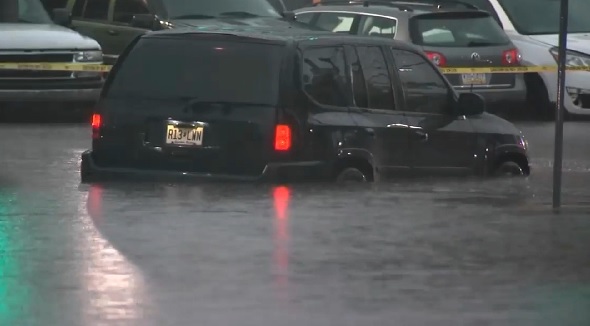Two people in New Jersey were killed after their vehicle was swept up in floodwaters during a storm that moved across the U.S. Northeast overnight, authorities said on Tuesday, July 15, according to Yahoo.com.
Governor Phil Murphy, a Democrat, noted the deaths occurred in the northern New Jersey city of Plainfield, where there were two storm-related deaths July 3.
A third person was killed in North Plainfield during the storm.
“We’re not unique, but we’re in one of these sort of high humidity, high temperature, high storm intensity patterns right now,” Murphy told reporters after touring storm damage in Berkeley Heights. “Everybody needs to stay alert.”
The names of the two latest victims were not immediately released Tuesday. Local officials said the vehicle they were riding in was swept into a brook during the height of the storm.
“Emergency personnel responded quickly, but tragically, both individuals were pronounced dead at the scene,” according to a statement the city posted online.
The heavy rains also caused flash floods in New York and south-central Pennsylvania on Monday night into early Tuesday, prompting road closures and snarling some service on the New York City subway.
It was the second-highest one-hour rainfall ever recorded in Central Park at more than 2 inches (5 centimeters), surpassed only by the remnants of Hurricane Ida in 2021, according to local officials.
Flooding in the New York City subway
Viral videos posted online showed water flooding down into one Manhattan subway station, submerging the platform while passengers inside a train watched on.
Janno Lieber, chair and CEO of the Metropolitan Transportation Authority, told ABC 7 in New York the city’s sewer system got overwhelmed by the rain and backed up into the subway tunnels and to the stations. In several cases, he said, the backup “popped a manhole,” creating the dramatic “geyser” seen in some videos.
“What happened last night is something that is, you know, a reality in our system,” he told the TV station, noting the backup happens when more than 1 3/4 inches of rain falls in an hour. “We’ve been working with the city of New York to try to get them to increase the capacity of the system at these key locations.”
City officials said their venerable sewer system worked as well as it could, but it simply was not built to handle that much rain.
“Imagine putting a two-liter bottle of water into a one-liter bottle. Some of it’s going to spill,” Environmental Protection Commissioner Rohit Aggarwala said at a virtual news briefing Tuesday.
Lieber said full service was restored to the subway, as well as commuter rails, after hundreds of people worked overnight to restore operations.
Flooding has proven to be a stubborn problem for New York’s subway system, despite years and billions of dollars’ worth of efforts to waterproof them.
Superstorm Sandy in 2012 prompted years of subway repairs and flood-fighting ideas, and some have been put into practice. In some places, transit officials have installed or are installing storm barriers at subway station entrances, seals beneath subway air vents and curbs to raise the vents and entrances above sidewalk level.

